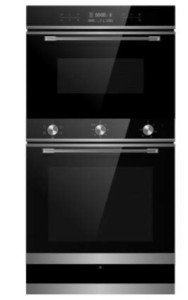10 Websites To Help You To Become An Expert In Oven Built In
Understanding Built-in Electric Ovens: A Comprehensive Guide
In contemporary kitchen areas, built-in electric ovens have actually ended up being a basic feature, offering convenience, effectiveness, and a classy combination into kitchen style. This article aims to inform house owners and cooking lovers about the benefits of built-in electric ovens, crucial considerations when selecting one, and upkeep ideas to ensure lasting performance.
What is a Built-in Electric Oven?
A built-in electric oven is developed to be set up within cabinetry or walls, flawlessly blending into the kitchen's architecture. Unlike standalone ovens, these designs conserve flooring area and can be positioned at eye level, helping with simple access and tracking while cooking.
Advantages of Built-in Electric Ovens
- Area Efficiency: These ovens make use of vertical area, making them perfect for smaller kitchens or those seeking to make the most of counter space.
- Visual Appeal: Built-in ovens supply a tidy and contemporary appearance that enhances the kitchen's overall style.
- Ergonomics: They are set up at comfortable heights, decreasing the stress on the back and knees, specifically when loading or dumping meals.
- Advanced Features: Many built-in electric ovens included state-of-the-art functions like smart controls, convection cooking, and self-cleaning options, which can make cooking easier and more effective.
- Improved Functionality: Models often consist of additional functions such as numerous cooking modes, timers, and temperature probes.
Key Considerations When Choosing a Built-in Electric Oven
When choosing a built-in electric oven, a number of aspects need to be considered to guarantee it fulfills your cooking needs and fits within your kitchen layout.
Size and Capacity
Built-in electric ovens generally can be found in various sizes. It's vital to determine the assigned area to ensure a correct fit. Here prevail sizes:
- Single Oven: 24 to 30 inches broad, suitable for many cooking tasks.
- Double Oven: Two different compartments, enabling you to prepare numerous dishes at various temperature levels.
- Wall Ovens: Available in large sizes, suited for comprehensive cooking experiences.
Functions
Selecting features that line up with your cooking practices is essential. Consider the following options:
- Convection Cooking: Distributes heat equally for constant results.
- Smart Technology: Enables remote control and preheating via mobile phone apps.
- Self-Cleaning: Simplifies maintenance and cleansing processes.
- Steam Cooking: Adds moisture to dishes for better cooking results.
Setup Requirements
Built-in electric ovens require adequate electrical wiring and ventilation choices. It's advisable to speak with specialists throughout the installation phase to fulfill electrical codes and guarantee security.
Cost Range
The cost of built-in electric ovens can differ substantially from budget choices (₤ 600 – ₤ 1,200) to high-end models (₤ 2,000 and above). Consider your spending plan and cooking frequency when selecting.
Rate Range
Functions
Best For
₤ 600 – ₤ 1,200
Fundamental functions, manual controls
Casual cooks
₤ 1,200 – ₤ 2,000
Convection, smart innovation
Major home cooks
Above ₤ 2,000
Premium products, advanced functions
Professional chefs or premium cooking enthusiasts
Upkeep Tips for Built-in Electric Ovens
Making sure that an electric oven operates efficiently involves regular upkeep. Here are some practical suggestions:
- Regular Cleaning: Wipe down the door and inside the oven after each usage to avoid grease buildup.
- Self-Cleaning Cycle: Utilize the self-cleaning function periodically (if offered). Follow the manufacturer's directions for maximum performance.
- Inspect Seals and Gaskets: Inspect the door seals for wear and tear to maintain cooking effectiveness.
- Adjust Temperature: Regularly check and calibrate the oven's temperature for precision cooking.
- Professional Servicing: Schedule yearly upkeep contact qualified specialists, especially for advanced models with numerous electronic elements.
Often Asked Questions (FAQs)
1. Are built-in electric ovens more efficient than traditional ovens?
Yes, built-in electric ovens frequently have much better insulation and functions like convection cooking that can cook food faster and uniformly, saving energy.
2. Can I set up a built-in electric oven myself?
While some handy individuals may pick to try a DIY setup, it is recommended to employ a professional to make sure safe and certified setup.
3. Just how much power does a built-in electric oven usage?
Typically, built-in electric ovens consume in between 2,400 to 5,000 watts, depending upon the model and features. Constantly refer to built under double oven and hob packages for accurate figures.
4. Do built-in electric ovens require special cabinetry?
Yes, built-in electric ovens need custom cabinetry or wall enclaves that support their weight and enable proper ventilation. Ensure that the cabinets abides by setup guidelines described by the producer.
Built-in electric ovens are an important addition to any modern-day kitchen, using an array of features that make cooking easier and enjoyable. By comprehending the advantages, choice criteria, and maintenance requirements associated with these ovens, consumers can make educated choices that line up with their culinary needs and lifestyle choices.
